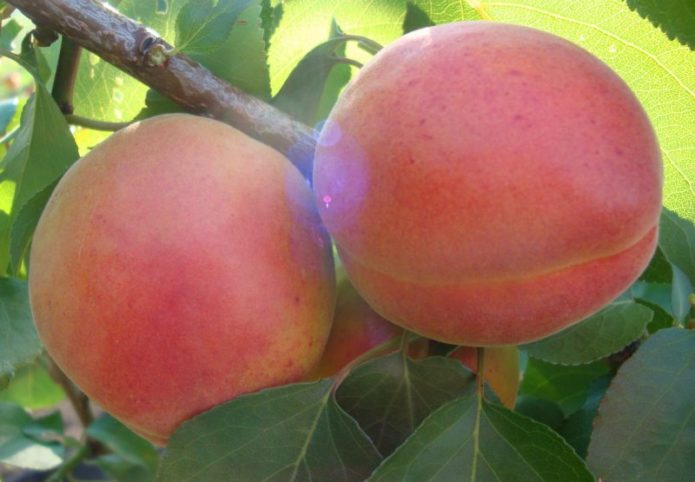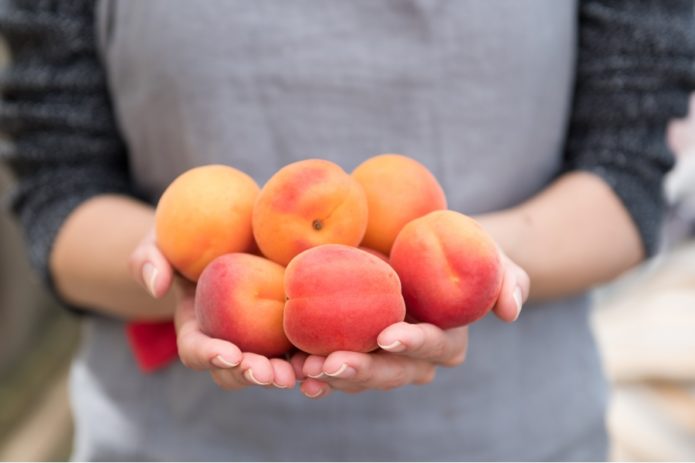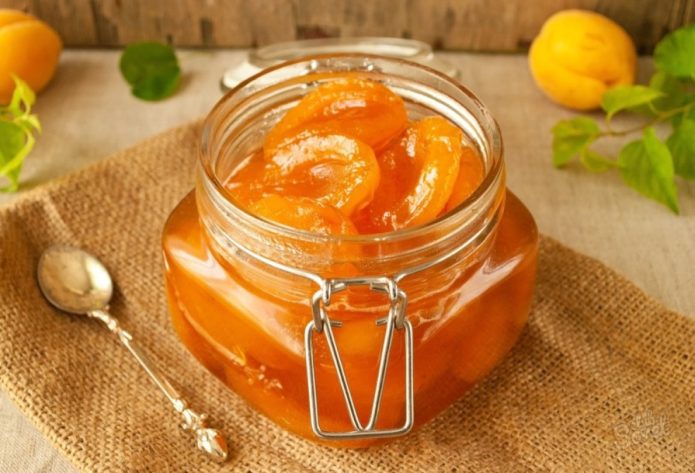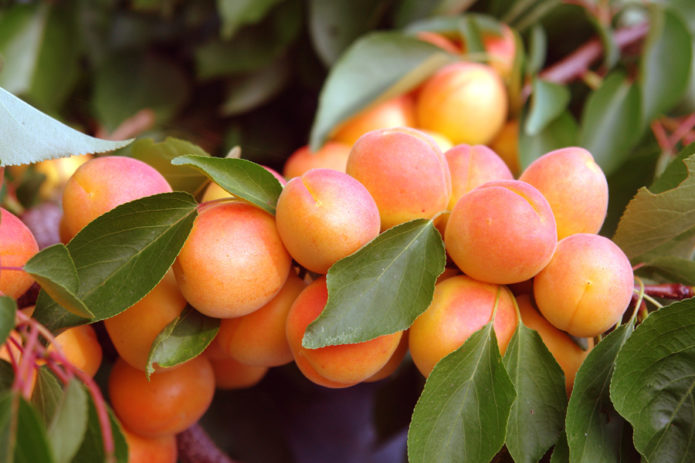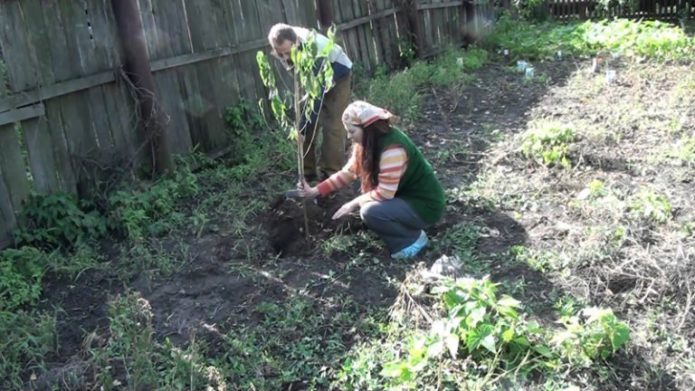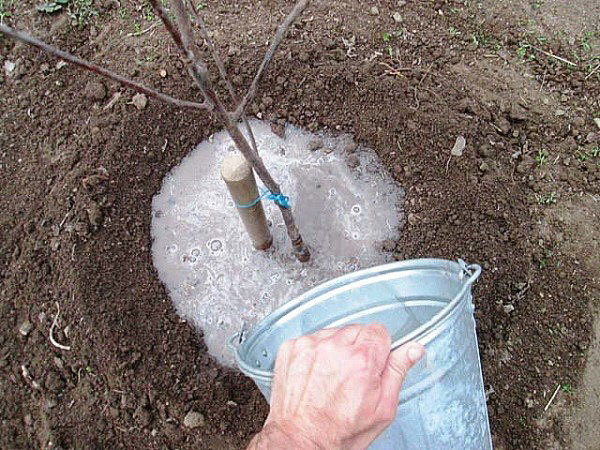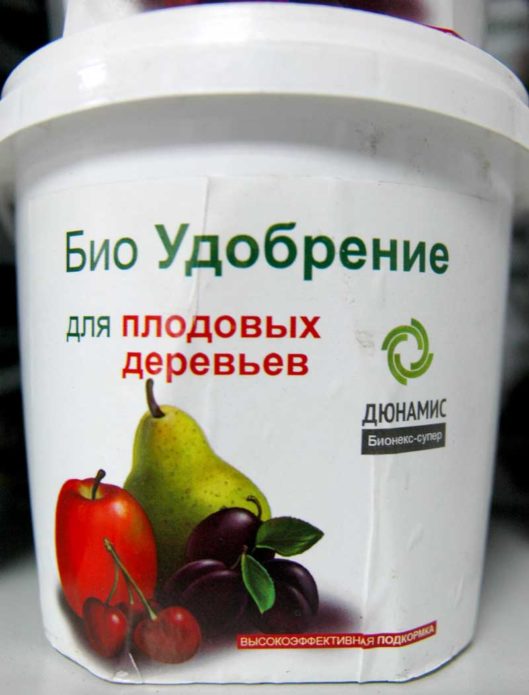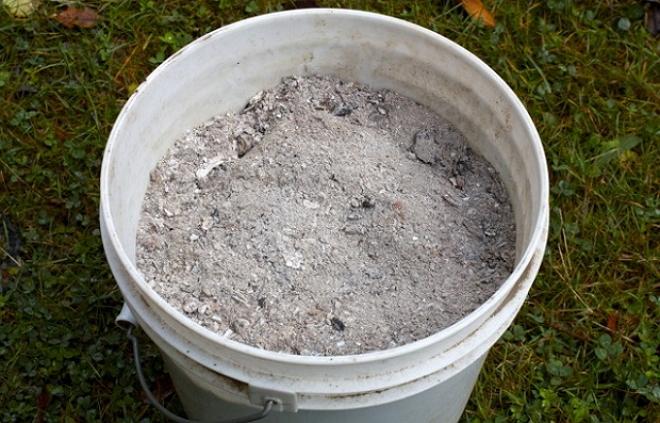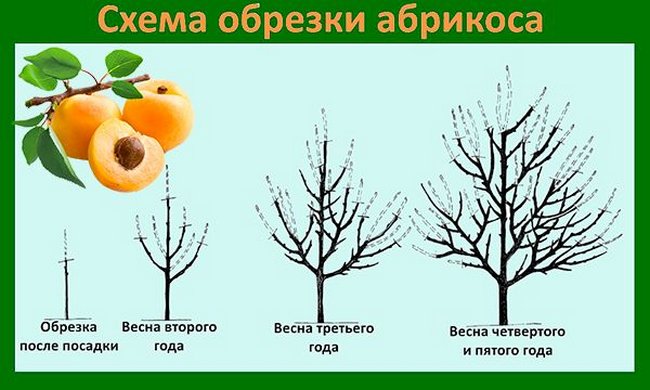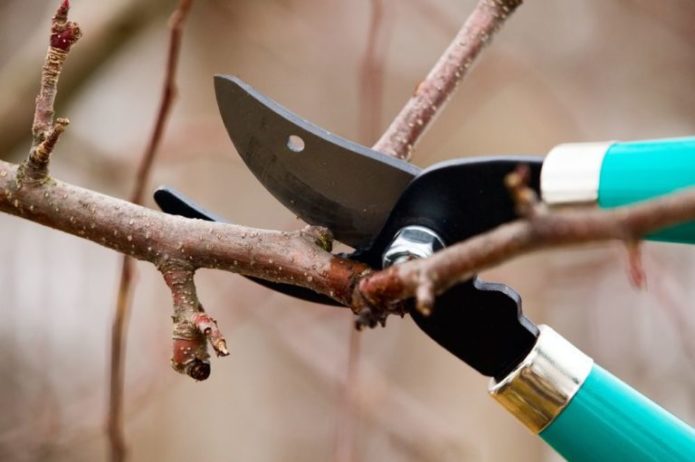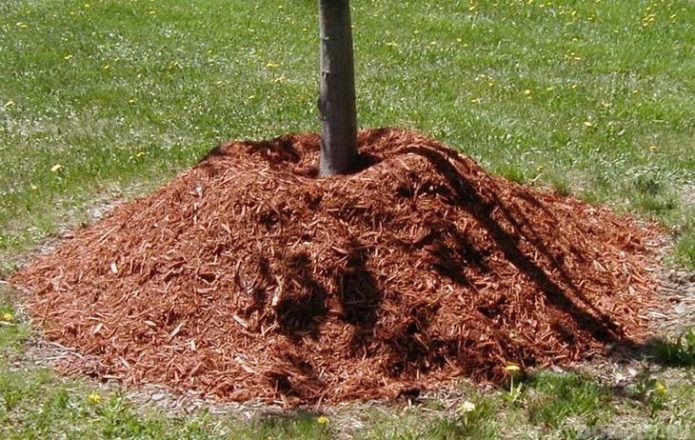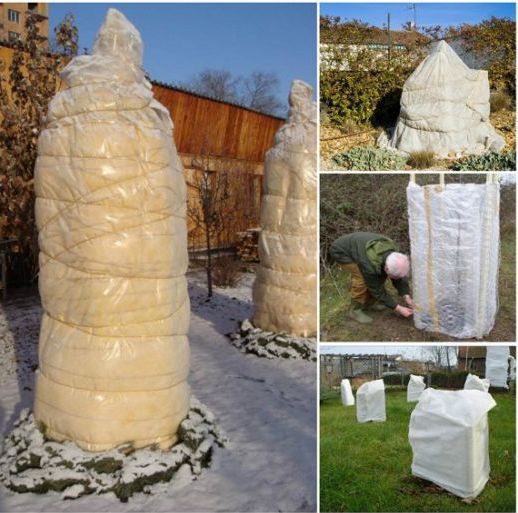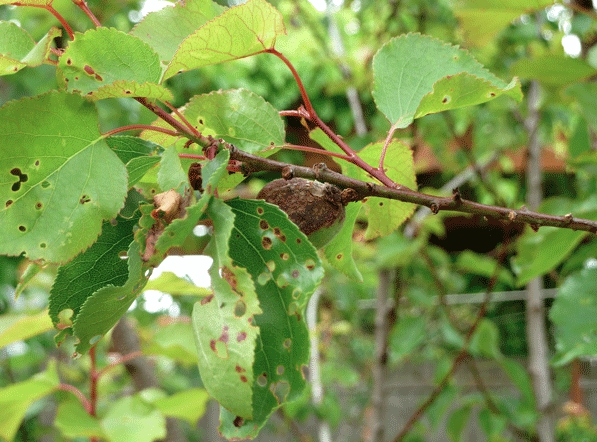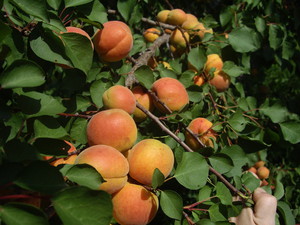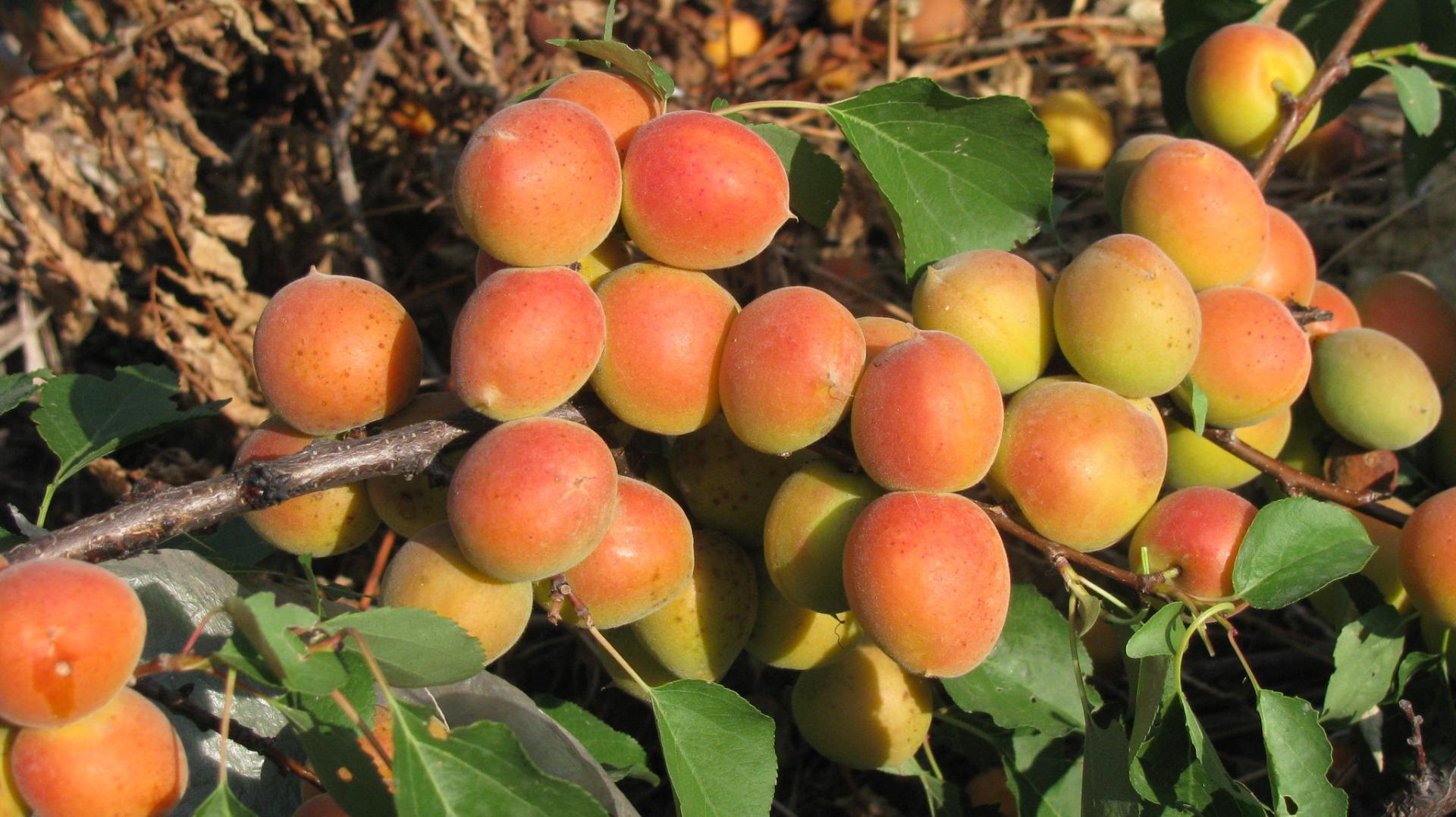Apricots are thermophilic, therefore, in Russia, only gardeners in regions with a warm subtropical climate have the opportunity to cultivate any of their varieties. Fruits of an elegant bright orange color are not only tasty, but also extremely useful for health, respectively, this tree is often found in personal plots. The choice of a variety must be approached with all responsibility, taking into account both the positive and negative aspects. Apricot Krasnoshekiy has been known to Russians for more than seventy years, but it is still popular, despite the ongoing competition from new breeding products. Its advantages (appearance and taste of fruits, relative unpretentiousness in care, yield) outweigh the disadvantages (tendency to be affected by certain diseases, frost resistance insufficient for most regions).
Content
What does an apricot variety Krasnoshekiy look like?
The history of the breeding of the Krasnoshekiy variety is still not known for certain. For the first time, fruits with a characteristic dotted "blush" were seen in Central Asia, from there the trees "migrated" to Armenia. The variety was entered into the State Register in 1947, after specialists carried out work to consolidate the characteristic feature in the Nikitsky Botanical Gardens in Crimea. Recognized as the most suitable for cultivation in the North Caucasus and the south of the Volga region. Now he, in addition to his homeland (Crimea), is most often found in the Rostov region and the Krasnodar Territory. It is also planted in the republics of the former USSR - Ukraine, Belarus, Latvia.
By the time of ripening, the variety belongs to the mid-season. Fruiting is extended, lasts 2-3 weeks starting from the 20th of July. Red-cheeked has the property of self-fertility. Therefore, the tree does not need other varieties for cross-pollination for stable formation of ovaries in large numbers. This property greatly contributes to saving the area of the garden plot, which is always relevant, especially for those who have it limited to standard six hundred square meters.
A mature tree reaches a height of 4–5 m. The crown is quite sparse, spreading, branches are long, the ends of the shoots are slightly drooping. She needs minimal assistance in shaping from the gardener. The crown almost independently acquires a fairly regular rounded-flattened configuration.
The fruits themselves at Krasnoshekiy are large, weighing about 50 g. Shape - from almost regular spherical to ovoid, slightly compressed on the sides. The characteristic "suture" is narrow, clearly distinguishable only at the base of the fruit.The skin is bright orange-golden in color, with a pronounced velvety edge. It is thin but rather dense. Due to this, the fruits are well stored (up to one and a half weeks at home) and can be transported over long distances.
Most of the apricot is covered with crimson-scarlet or purple “blush” in the form of small rounded specks on a pinkish background. Because of this feature, the variety got its name. The yield is quite high - up to 90 kg from an adult tree. Under the weight of the fruits, which practically cling to the branches, like a giant sea buckthorn, they often bend almost to the ground.
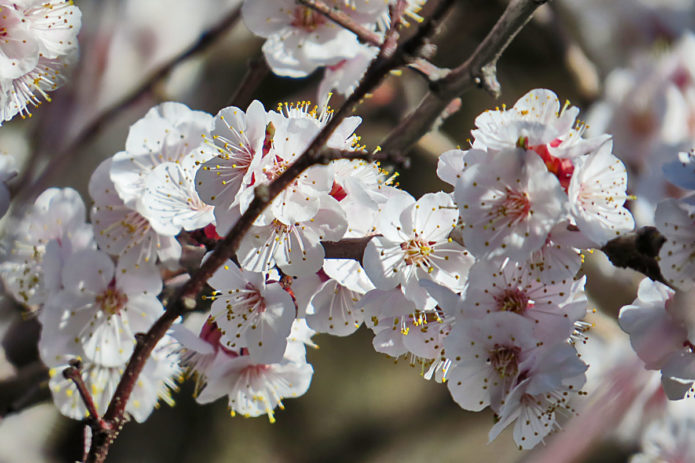
Apricot Red-cheeked is planted mainly for the sake of fruiting, but every spring it also performs a decorative function
The pulp is pale orange, homogeneous, dense, but at the same time tender, not too juicy. Characterized by a rich aroma with hints of honey. The taste is sweet, with a slightly perceptible sourness. Apricots practically melt in your mouth. The stone is large, easy to remove.
The two most significant drawbacks of the variety are insufficient cold resistance for very many regions of Russia and a tendency to be affected by certain fungal diseases. In fact, without the risk of annual freezing (and even then subject to shelter), the Red-cheeked apricot can be cultivated only in the regions indicated by the State Register. If during the winter the temperature drops below -15–20 ° С, the tree gets serious damage, from which it recovers rather slowly.
Of the diseases, the most dangerous for him are moniliosis, clasterosporia and brown spot. Infection is almost inevitable when the gardener is unlucky with the weather during the spring and summer. Coolness and heavy rainfall contribute to the spread of pathogenic fungi.
Also, sometimes gardeners complain about the significant height of the tree, which makes it difficult to care for it and harvest. But this drawback is easily leveled by competent pruning.
The Krasnoshekiy variety is loved by gardeners for its non-capriciousness, although in general this culture is quite demanding in care. And this apricot is able to forgive the gardener for individual mistakes in agricultural technology, it bears fruit stably in the soil of almost any quality, it tolerates moisture deficit in the soil well. Saplings quickly take root in a new place.
The crop is removed annually, without seasonal breaks. The first apricots can be tasted within 3-4 years after planting the seedling in a permanent place. The productive life of a tree is about 50 years.
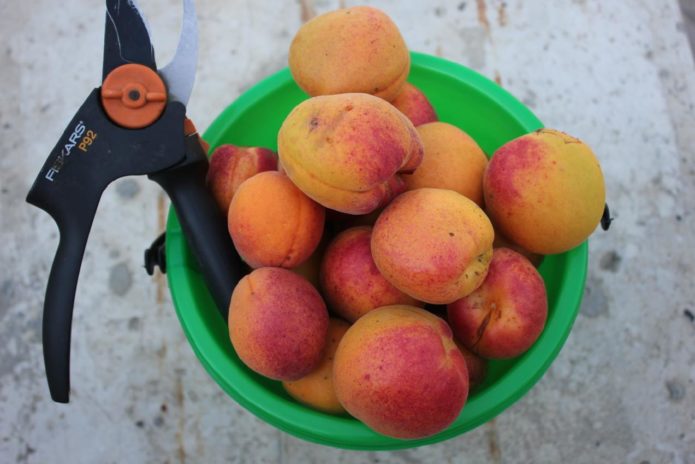
Apricot Red-cheeked compares favorably with other varieties with high yield and a long period of productivity
The purpose of Krasnoshekiy apricots is universal. They are not only eaten immediately, but also dried. They are also suitable for all kinds of homemade preparations. Under the influence of high temperatures, fruits retain their shape, do not lose color saturation. Any preparations and baked goods are remarkably tasty and aromatic.
Red-cheeked because of the excellent taste and presentability of the fruit is very much in demand by breeders. For example, with his participation the varieties Nikolaevsky, Nikitsky and Snegiryok were created. But the most famous "offspring", of course, is the apricot Son of the Red-faced. Its main advantage over the "parent" is its higher cold resistance. It blooms later, therefore it suffers less from recurrent spring frosts. The state register recognized it as suitable for landing in the Volga region, but it is successfully cultivated in other regions of central Russia. Another improvement is the presence of "innate" immunity to moniliosis. The crown of the tree is denser, the yield is slightly higher, although the fruits themselves are smaller (about 40 g). The "blush" on fruits is less pronounced - these are pinkish blurred spots.Some gardeners claim that these apricots are tastier, as they are completely devoid of the characteristic sourness, but this is subjective. The most reliable way to distinguish "father" from "son" is to extract the embryo from the bone. In the first it tastes sweet, in the second it is noticeably bitter.
Video: description of the apricot variety Red-cheeked
Planting a seedling in the ground and preparatory procedures
The general unpretentiousness of the apricot Red-cheeked to a large extent extends to the cultivation conditions. For example, a tree does not set excessive requirements for the quality of the substrate. This variety successfully adapts and bears fruit in a wide variety of soil, as long as it is sufficiently loose and light. Adequate water and air permeability of the soil is vital for any apricot. But ideally, Red-faced should be planted in fertile soil. Taking into account the need for aeration, forest gray soil or loam is suitable for it.
In acidified soil, a tree of this variety will also survive, but its growth and development will significantly slow down. The yield will decrease accordingly. Therefore, the acidity of the substrate is preliminarily found out and, if necessary, dolomite flour, slaked lime, eggshells crushed to the form of powder (250-400 g) are introduced into the planting pit.
Moisture stuck at the roots almost inevitably destroys the tree. In no case any lowlands and depressions of the relief are suitable for Krasnoshchekiy. It is from there that melt and rain water, cold moist air does not leave for a long time. For the same reason, the plant is not suitable for areas where groundwater approaches the surface of the earth by 1.5 m and closer. If there is nowhere else to place the seedling, you will first have to build an embankment with a height of at least 70-80 cm.
The top of the hill for Red-faced is also not a very good place. The tree, of course, needs sunlight, but protection from the wind is much more important for it. It will endure a slight partial shade, and this will practically not affect the yield, but cold drafts, especially in winter, can cause significant harm to it. A fence or "curtain" made of tall plants (corn, sunflower), located at a distance of 2-3 m from the tree, will quite cope with the task. But the best option is a brick or stone wall. It not only protects from the wind, but also shares the heat accumulated during the day at night.

Warmth and sunlight for the apricot Red-cheeked, of course, is necessary, but protection from the wind is very important
It is advisable that no other fruit trees grow earlier in the place reserved for the apricot. He tolerates the neighborhood with them calmly, especially with apple and pear trees. But the presence of raspberries or any currants nearby is not welcome. It is quite possible to plant any spicy greens under the tree. His crown is quite rare, it will not create a thick shadow. Low flowers are also a good option. Many of them, for example, marigolds, nasturtiums, calendula, have a characteristic aroma that is unpleasant to many pests.
Choosing the right seedling is very important. In many ways, the quality of the planting material determines the future harvest. In apricot, you need to pay attention to the condition of the root system, bark and leaf buds. The roots of a healthy tree are not overdried and flexible, the bark is smooth and elastic, even in color, the buds are large. At the base of the trunk, there must be a small "influx" - this is the place of inoculation. Only in this way is it ensured that the characteristic varietal traits are preserved. The best survival rate is demonstrated by two-year-old trees. Their minimum height is 65–70 cm. Several lateral branches are required. Any seedlings are purchased only from reliable suppliers with a good reputation.
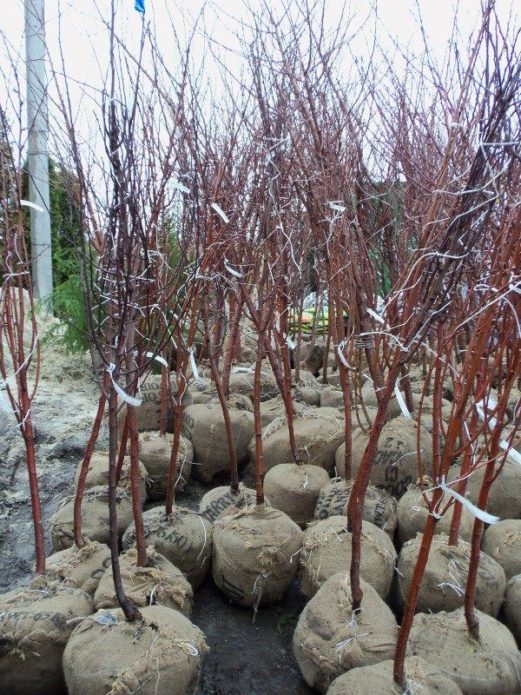
The choice of an apricot seedling must be approached with all responsibility, this is a guarantee of the future harvest
Since the apricot Red-cheeked lives mainly in the warm southern regions, the planting time is determined based on the personal preferences of the gardener. Most of them practice fall planting. Firstly, then in nurseries plants are presented in a much wider assortment, respectively, it is much easier to purchase a seedling of the required variety and proper quality. Secondly, practice shows that fruit trees planted before winter then show better immunity and resistance to unfavorable weather conditions.
Apricot Red-cheeked self-fertile. However, the long-term practice of its cultivation testifies that the presence of several more trees nearby has a good effect on the yield and taste of the fruit. If two or three specimens are planted at once, it must be borne in mind that the root system of trees of this variety goes not only deep into the soil, it noticeably exceeds the crown in diameter. Therefore, at least 4–5 m are left between them. In general, as a general rule, the minimum possible distance between apricots is half the sum of the diameters of the crowns of adult trees. You can save some space by staggering them.

When planting several apricot seedlings at the same time, Red-faced, each tree needs to provide sufficient area for nutrition
Winter in the south of Russia comes in full or almost full accordance with the calendar. It will take at least 7-8 weeks for a Krasnoshekiy sapling to adapt to new living conditions. Accordingly, the most favorable time for disembarkation is from early September to mid-October. Of course, no one forbids doing this in the spring. Seedlings can be transferred to the garden from mid-April to late May.
The pit for the autumn landing of the Red-cheeked is prepared ahead of time, at least 2-3 weeks in advance. And if it is decided to postpone the procedure until spring, all preparation is carried out in the fall. The root system of trees of this variety is quite powerful, precisely due to the fact that they can draw moisture from the deep layers of the soil, good drought resistance is provided. Therefore, its depth is at least 80 cm. In diameter, 50-60 cm is sufficient.
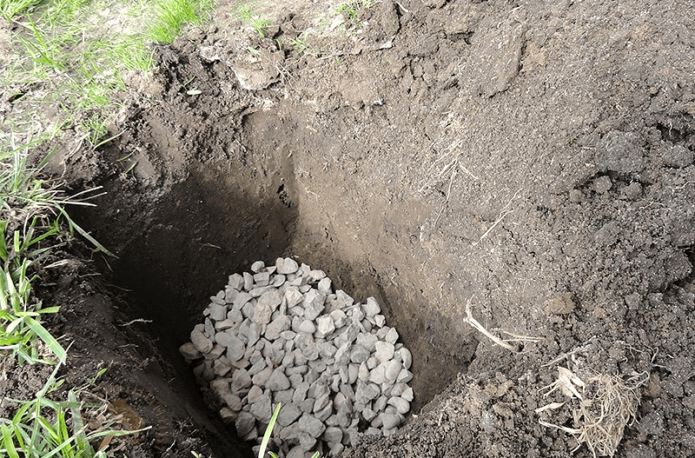
At the bottom of the planting pit for the apricot Red-cheeked, drainage is required so that moisture does not stagnate at the roots
Drainage will help to avoid stagnant water at the roots. The most common option is expanded clay, but pebbles, crushed stone, brick chips, small clay shards will cope with this task no worse. The most fertile soil is the top 15–20 cm. When extracting from the pit, this soil is poured separately. Then it must be mixed with humus or rotted compost (1.5–2 buckets), and nitrogen (30–40 g), potassium (25–30 g) and phosphorus fertilizers (50–70 g) added. If one complex product is used (Azofoska, Diammofoska, Nitrofoska), the norm is 120–150 g. For adherents of natural agriculture, sifted wood ash (about 3 liters) is a good alternative.
The resulting mixture is filled with about a third of the volume of the pit, creating a kind of mound at the bottom. Then, before disembarking, it is covered with a material through which water does not seep so that the nutrients are not washed away by rains.
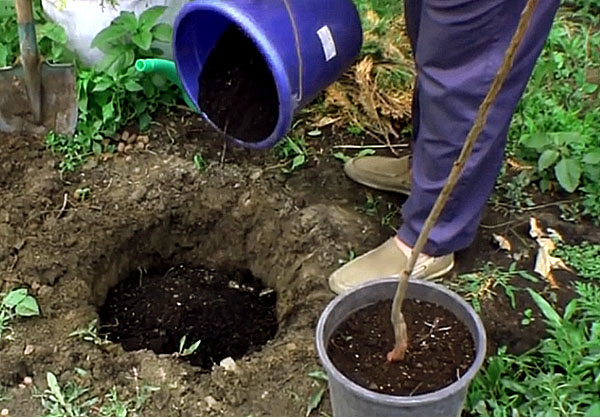
The mixture at the bottom of the planting pit will provide the apricot with nutrients for several years
Directly landing Red-cheeked on a permanent place is nothing particularly complicated. The procedure can be carried out even by an inexperienced gardener. But it's better to start it together - it's just more convenient.
- The planting hole is opened, a support for the seedling is stuck into the mound of soil at the bottom, slightly away from the center - a wooden peg. In height, it should exceed the plant by 20-30 cm (taking into account the depth of the pit). Then the soil is moistened using 30–40 liters of water.
- If the root system of the seedling is open, it is immersed for 20–25 hours in soft, settled water heated to 30–35 ° C.To protect against fungal diseases, potassium permanganate is added to it at the tip of a knife or any fungicide of biological origin (the dosage is determined based on the manufacturer's instructions in the instructions). Also biostimulants have a positive effect on plant immunity. They also make it easier for him to adapt to a new habitat. Both purchased preparations (Emistim-M, Kornevin, sodium or potassium humate, Heteroauxin) and folk remedies (aloe juice, baking soda, liquid honey, succinic acid tablets) are suitable. Apricots in containers should be watered abundantly about half an hour before planting.
- The roots are examined, areas of dead or damaged tissue are cut with a sharp disinfected knife. Healthy ones are simply shortened by a few centimeters. Then they are immersed in a mixture of powdered clay and fresh manure. It is diluted with water to a thick, creamy consistency. After the procedure, the mass dries in the open air for a couple of hours.
- The tree is placed on a mound so that the roots go down its "slopes". They should not stick up and to the sides. They begin to fill the hole gradually, gradually filling up the substrate. To avoid the appearance of air pockets, it is periodically carefully tamped, and the tree is shaken, holding it by the trunk. The position of the root collar is controlled in such a way that when the hole is filled, it is 4–5 cm above the soil level. The only exception is planting apricots in a sandy substrate. Then it needs to be deepened by 3-4 cm.
- The soil is tamped again, at a distance of about half a meter from the trunk, a low earthen roller is erected. The soil is moistened using 20–30 liters of water. After about half an hour, the soil in the formed circle can be mulched with humus, peat crumbs, dead leaves or freshly cut grass.
- The tree is neatly but securely tied to a peg. The existing side shoots are cut off completely, the central one is shortened by about a third.
It is advisable to choose a place for the apricot Red-cheeked immediately and forever. Mature trees can only be removed from the soil with an excavator, most likely causing irreversible damage. Only plants 3–4 years old are transplanted. The procedure is carried out in early spring, while the leaf buds have not yet opened. The tree is removed from the soil, trying to cause minimal damage to the roots and, in general, an earthen coma. All the necessary fertilizers are introduced into the new planting pit, increasing the rate by 1.5 times. The plant is watered abundantly. Skeletal branches are shortened by about a quarter.
Video: planting an apricot seedling in the ground
Nuances of culture care
Even a gardener who does not have rich experience in cultivating fruit trees can handle the care of an apricot. Compared to other varieties, this one is much less capricious. He only needs watering, top dressing, minimal pruning and preparation for winter. Of course, you should not neglect the maintenance of the trunk circle clean. Loosening and weeding are necessary here. The main difficulty is the prevention and control of pathogenic fungi.
Watering
The drought resistance of Krasnoshchekiy is very good compared to other varieties, but there are periods when moisture is vital for him. This is the time of active growth of the green mass in spring, the formation of fruit ovaries and the ripening of apricots (they reach the size of a walnut). The rate of water consumption depends on the age of the plant. For seedlings aged 3-4 years, 10-15 l / m² of a near-trunk circle at a time is enough, then the trees already need 40-45 l / m². In the first year after the spring planting, the soil is moistened weekly, and if it is hot outside, generally once every 3-4 days.
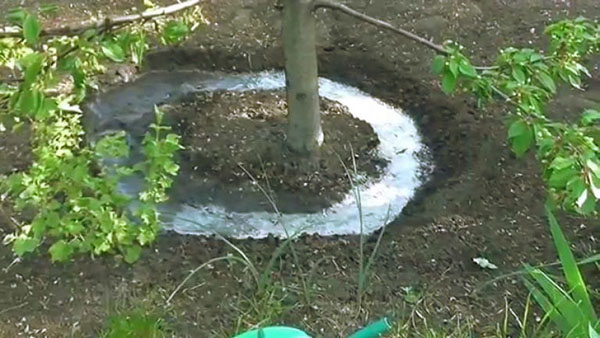
Most often, an apricot tree is watered along ring grooves, the last of which approximately coincides in diameter with the crown
Another necessary measure is water-charging irrigation.He helps Red-cheeked to properly prepare for wintering. It is carried out in the last days of October, only if the autumn is warm and dry. An adult plant requires 70–80 liters of water.
Many pathogenic fungi are transmitted precisely with water droplets. Therefore, it is better not to practice sprinkling and irrigation of the crown from a hose for the Red-faced. The most suitable irrigation methods are ring furrows or row spacing.
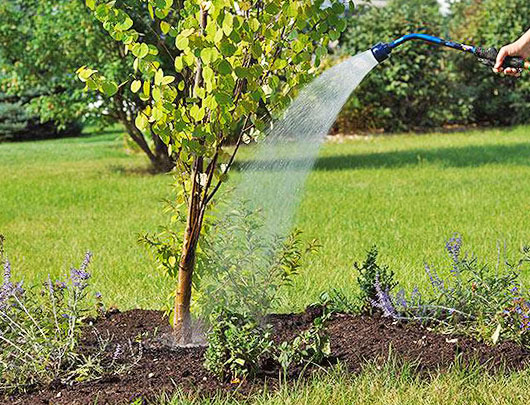
The causative agents of many diseases are transmitted with drops of water, so it is better not to water the apricot Red-faced with sprinkling
The natural result of regular waterlogging of the soil, most likely, will be the development of root rot. Red-cheeked also negatively reacts to the alternation of periods of prolonged drought with rare, but very abundant irrigation of the soil - the fruits crack, fall massively.
Fertilization
Red-cheeked responds to feeding with gratitude. But here it is very important to observe the recommended proportions. What is the norm for other fruit trees is clearly too much for an apricot. You can even cause irreversible damage to the plant.
Since nutrients in sufficient quantities for the next couple of years are introduced during the preparation of the pit, the red-cheeked feeding is renewed only in the third year of the seedling's stay on the site. At the beginning of April, in order to maintain the level of fertility of the substrate, humus or rotted compost (5-7 l / m²) is scattered around the trunk circle every 2-3 years, simultaneously loosening the soil. Upon reaching the age of 10, the rate is increased to 12-15 l / m². After 1.5–2 weeks, in order to stimulate the “awakening” of the tree and the active growth of green mass, mineral nitrogen-containing fertilizers, for example, urea, are applied. The recommended dose (10-15 g / m²) can be distributed as a single dose or divided into 2-3 doses. The last one is before the buds open.
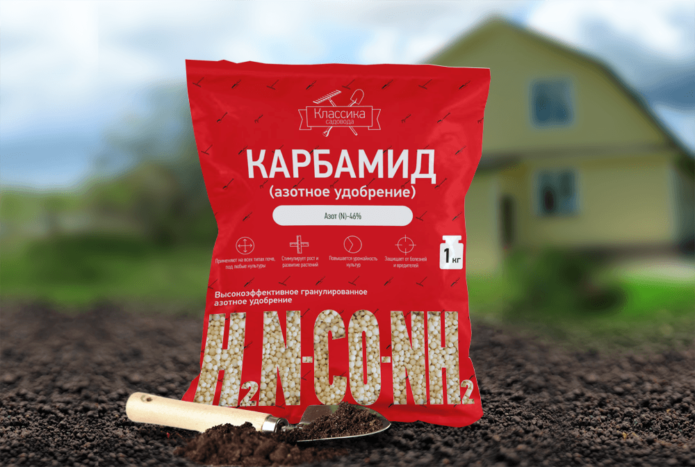
Nitrogen-containing fertilizers in the right doses help the plant to start growing green mass faster, but their excess is very harmful for apricot
Then the apricot does not need nitrogen. Moreover, it is even undesirable. Its excess has a bad effect on the immunity, which is so far from ideal in this variety. Other possible negative consequences are gum flow, decreased productivity, disruption of the normal course of the preparation process for winter.
Phosphorus is vital for ripening fruits, and even more - potassium. Red-faced is extremely sensitive to the deficit of the latter. Therefore, two more dressings are carried out before harvesting the fruit. Immediately after the flower petals fall off, you can use an infusion of fresh cow dung, bird droppings, dandelion or nettle leaves with the addition of two tablespoons of superphosphate and potassium sulfate in a bucket of solution. And about 4-4.5 weeks before harvesting - any complex fertilizer for fruit trees. Or vice versa.
The last feeding of Krasnoshekiy is carried out after a month after the end of fruiting - at the junction of summer and autumn. For normal preparation for wintering, the plant again needs potassium and phosphorus. Their natural source is wood ash. There are also special fertilizers without nitrogen content (ABA, Autumn). Top dressing is applied both in dry form and as a solution. This is determined by how often it rains at the specified time.
Video: tips for caring for an apricot tree
Pruning
The crown of Krasnoshekiy is quite rare, it takes the correct configuration with minimal help from the gardener. Therefore, it will only be required to limit the growth of the tree at a more convenient height for maintenance (usually about 3 m) and regularly pay attention to sanitary pruning.
But still, sometimes nature needs a little help. The best option for Red-cheeked is a sparse-tiered crown. In its completed form, it consists of 3-4 tiers of 5-6 skeletal branches each with an interval of 30-40 cm in height. On each skeletal shoot, the same number of branches of the second and third order are left. Tiers are formed gradually, with a difference of a year. Simultaneously with the second, branches of the second order appear on the first, and so on. The gardener's task is to choose the most well-located skeletal shoots, and then the branches, which will bear fruit. The first ones should be powerful, even, located at a not too sharp angle in relation to the trunk. The rest are those that are directed upwards, not downwards and to the sides.
Another necessary procedure is crop rationing. Red-cheeked produces much more fruit than it is able to "feed" a tree. At the same time, he does not dump "surplus" on the ground. After the apricots reach about the size of the nail, you will need to remove the least well-located ones - those that are hidden in the depths of the crown.
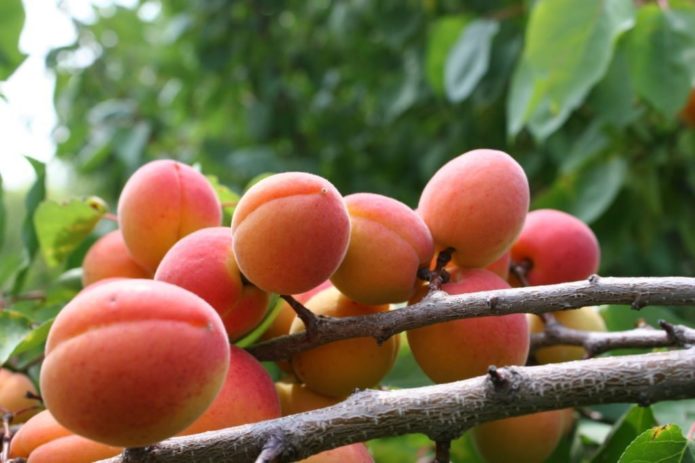
Apricot fruits Red-cheeked literally stick around the branches, the crop definitely needs to be rationed
Sanitary pruning is done in early spring and late fall. In both cases, it is obligatory at positive temperatures. In the spring, be sure to catch it before the leaf buds bloom. In the fall, the tree should lose all its foliage. They get rid of all those who have not survived the winter cold, broken under the weight of snow and ice, branches damaged by insects. Also cut off those that, due to an unfortunate location, intertwine with others, thickening the crown, directed downward or deep into it. The trunk to the first level of skeletal branches is cleaned of any overgrowth.
The tree is regularly inspected during the summer. All shoots, leaves, fruit ovaries infected with pathogenic fungi are immediately removed. They will need to be burned as quickly as possible. To minimize the risk of contamination, any trimming is performed only with sharply sharpened and disinfected tools. And all the "wounds" inflicted on the tree are washed with 2% copper sulfate and hermetically closed with garden varnish. Or at least a couple of coats of oil paint.
Video: tips for pruning apricots
Preparing apricots for wintering
Frost resistance is one of the main disadvantages of Red-cheeked. Therefore, even in warm regions with a subtropical climate, it is better to insure yourself.
Even if you decide to give up shelter for the winter, the trunk circle in the fall will need to be carefully cleaned of fallen leaves and fruits, debris of branches, and so on. Then it is loosened and re-covered with mulch. Layer thickness - at least 10-12 cm. At the trunk, it is brought to 25-30 cm.
The trunk itself and the lower part of the skeletal branches must first be covered with a special store-based or self-prepared composition based on slaked lime. Then, in order to protect the tree from rodents, its base is wrapped in several layers of any air-permeable material, shifting it with coniferous branches.
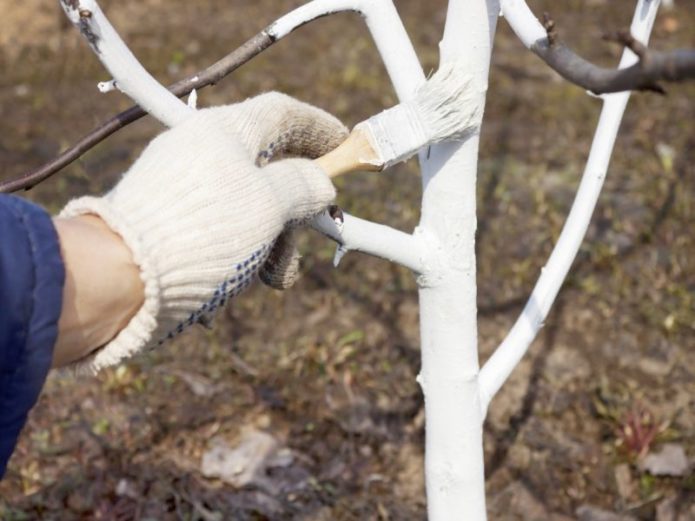
It is easy to prepare a composition for whitewashing fruit trees on your own, it consists of water, hydrated lime, powder clay, copper sulfate and office glue
Young seedlings aged 2-3 years suffer from frost even more than adult trees, so a shelter is built for them. If the size of the tree allows, the shoots are tied, a cardboard box is put on top, stuffing it with sawdust, shavings, finely torn newsprint. Around the rest of the apricots, a kind of hut is erected - a frame made of slats, covered with several layers of burlap, lutrasil, and spunbond.
Video: proper preparation of fruit trees for winter
Diseases: control and preventive measures
Sufficiently low immunity is the "Achilles heel" of the apricot Red-cheeked. Therefore, the prevention of diseases and the fight against them will have to be given time regularly. Fungi do not tolerate copper compounds, therefore, if infection was still not avoided, any fungicides, preferably of biological origin, are used to combat them.
Moniliosis
The foliage on the shoots turns black, as if burnt or frozen. Small grayish-beige "warts" appear on the bark. Gradually, the affected shoots change color to brown-brown and dry out. Fruits are covered with rough black-gray spots, fall off en masse, not having time to ripen.
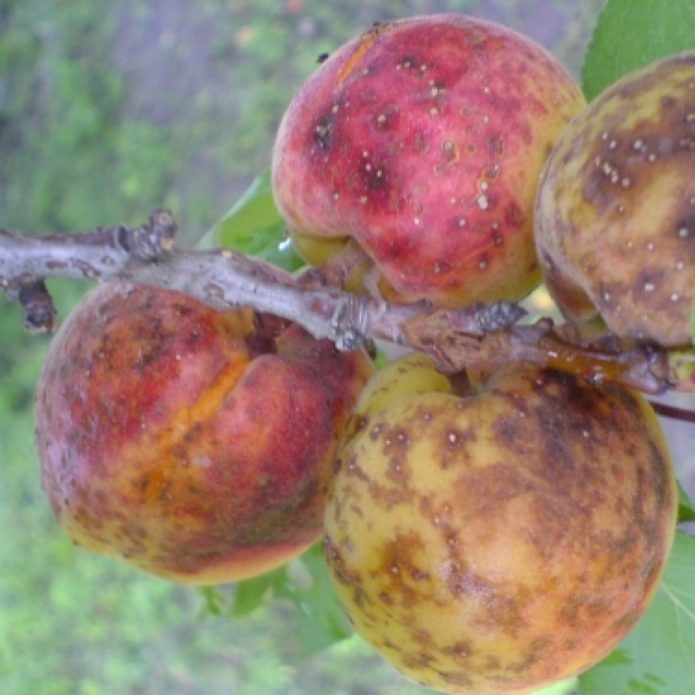
The fungus that causes moniliosis penetrates into tissues through cracks and other mechanical damage in the bark, and successfully hibernates in plant debris
The disease develops quickly enough, literally in 4-7 days. Therefore, when the first symptoms appear, fighting it will no longer save you from losing a significant part of the crop. For prophylaxis, leaf buds in the "green cone" phase and fruit ovaries after the flowers fall off are treated with a solution of any fungicide. It will also be necessary to spray the soil in the trunk circle. Suitable, for example, Rovral, Gamair, Abiga-Peak. After 3-4 weeks of harvest use Skor, Topsin-M. You can also use drugs that have been tested by time and by many generations of gardeners - copper oxychloride, Bordeaux liquid, copper sulfate.
Video: ways to combat stone fruit moniliosis
Brown spot (phyllostictosis)
Typical symptoms on apricot trees appear, as a rule, in early June. At first, these are almost imperceptible blurry spots of yellowish color on the leaves. Then they increase in size, occupying half of the leaf plate and more, change color to brownish brown. The affected tissues gradually dry out, and a bright yellow border appears along the edge. Leaves fall. Brownish spots also appear on the fruits. Their surface cracks, the pulp underneath dries to the bone. Apricots are deformed and crumbled. Towards the end of summer, spores of the fungus also form - a powdery black plaque resembling soot on the inside of the leaves.
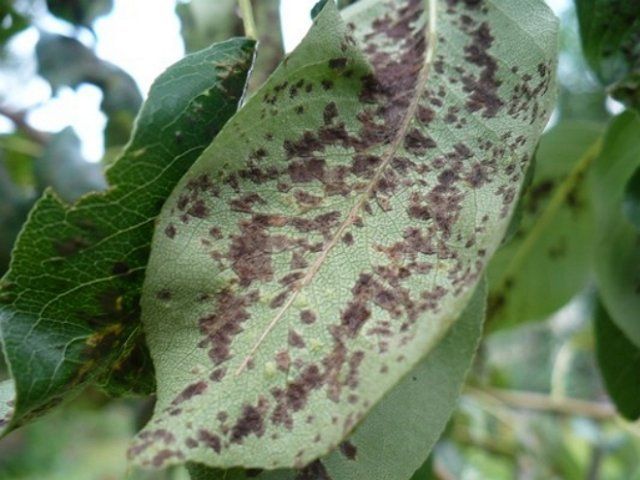
Infection with brown spot provokes leaf fall of an apricot tree 2-2.5 months earlier than nature intended
To prevent the disease, trees with fully opened leaves are sprayed with Kaptan, Tsineb. The processing is repeated twice more with an interval of 12-15 days, and then - about a month after harvesting. In the spring, if the tree was badly damaged last year, the leaf buds, when they acquire a crimson hue, are treated with 3% Bordeaux liquid.
The experience of gardeners shows that already mature leaves suffer most from phylostictosis. But the young, newly opened fungus for some reason bypasses.
Hole spot (clasterosporia)
The disease affects all parts of the tree, but is most pronounced on the leaves. Small rounded rusty-brown spots with a bright crimson border appear on them. The affected tissues die off, holes are formed. Reddish-orange depressed “ulcers” with black-brown edging appear on the branches. Their surface cracks, gum oozes from the cracks. Fruits are affected last. Something similar to reddish-brown "ulcers" also appears on the skin. Gradually they grow, turning into "warts", harden and fall off, leaving a hole from which gum oozes.
To prevent the development of the disease, copper or iron vitriol (2-3 g / l) must be added to the solution for whitewashing trees. For 1.5-2 weeks before flowering and with the same interval after it, apricots are treated with a solution of Horus, Signum, Skor.
Gardeners reviews
Apricot Red-cheeked. The tree is vigorous, with a rounded spreading crown. Fruits are medium in size (40–52 g), rounded flat, ovoid, golden orange with a red blush. The skin is velvety pubescent, rather thin, but dense.The pulp is light orange, with a sweet and sour characteristic apricot aroma. The stone separates well from the pulp. The variety is fast-growing (3-4 years old), fruiting on July 20-23. The yield is annual.
I wanted to plant an early apricot, it was in mid-May. The leftovers were already on the market, so instead of the early one they offered me a Red-faced, as a mid-early, not very good quality seedling. For two years I brought him to his senses, on the third I gave two beautiful fruits. But alas, it reached the end of July. After that, I take seedlings only in nurseries, freshly dug up. The variety is good - does not get sick, fruitful (in the fifth year he collected a bucket of fruits), knits like sea buckthorn, but the apricots are not large. It does not get sick without treatments, does not eat aphids, at least not with me. Planted and forgot. But I had to graft early Melitopol into the crown in order to eat early apricots.
The easiest way to distinguish the fruits of the Krasnoshekiy variety from the Son Krasnoshekiy variety is by the kernel of the stone. It is sweet for Red-faced, and bitter for the Son of Red-faced.
The apricot is ripe Red-cheeked. Very sweet, but does not lay well and ripens unevenly.
In my south in the garden, two trees of the Krasnoshekiy variety have grown four meters in six years, but they have never bloomed. I took them and uprooted them. What will they take up? And the neighbor's tree Krasnoshekogo is already nine years old. The tree was huge, but it never had apricots on it. Only last year it gave a harvest, but it drove it so moniliosis up the mountain that it was not really possible to harvest it. And your climate is much more severe. Probably, you won't have Krasnoshekiy.
The red-faced one gave me a good harvest last year. In this - the fruit buds are very frozen, but he himself is whole. This Red-cheeked in the second year of his life froze to the level of snow, but after pruning (maybe he will survive) he gave an increase of more than 2 m, and after two years he bore fruit.
Unfortunately, after four years of continuous struggle, not for the harvest, but simply for survival, the Red-faced apricot was destroyed. Although, in general, there was no apricot after winter - only dry frostbitten branches, and young leaves in some places. Before that, even in warm winters, he regularly managed to freeze over, the tips of all branches - without exception, then late, closer to mid-June, the leaves began to bloom, by the end of summer he was building up the green mass, and very slowly and a little. I tried local agronomists, what are the prospects, they told me - none. And I bought it at the fair, some nursery came, where they told me that this particular variety was zoned for the St. Petersburg region. And the locals in the kennel laughed at my gullibility.
Apricot Red-cheeked was planted with a twig in 2011, in 2013 he gave a couple of kilograms of fruit to try. Nothing at all: tasty, aromatic. Height - about 1.7 m. In the planting pit - sand, fine gravel, rotted manure and ash "by eye". And also anything different, which is not a pity ...
Red-faced and the Son of Red-faced, I grew up well, but there were very few apricots. It was just frosts at the time of flowering, very beautiful, bright, but ... So they removed it.
Apricot Red-cheeked is still considered one of the best mid-season varieties. But in Russia, its cultivation without the annual risk of tree death is possible only in the mild climate of the Black Sea region and other regions with similar conditions. The variety is valued for its non-capricious care, excellent taste and presentable appearance, versatility of the fruit's purpose. It is time-tested, its advantages and disadvantages are known in advance. This is a great option for a gardener with little experience.
